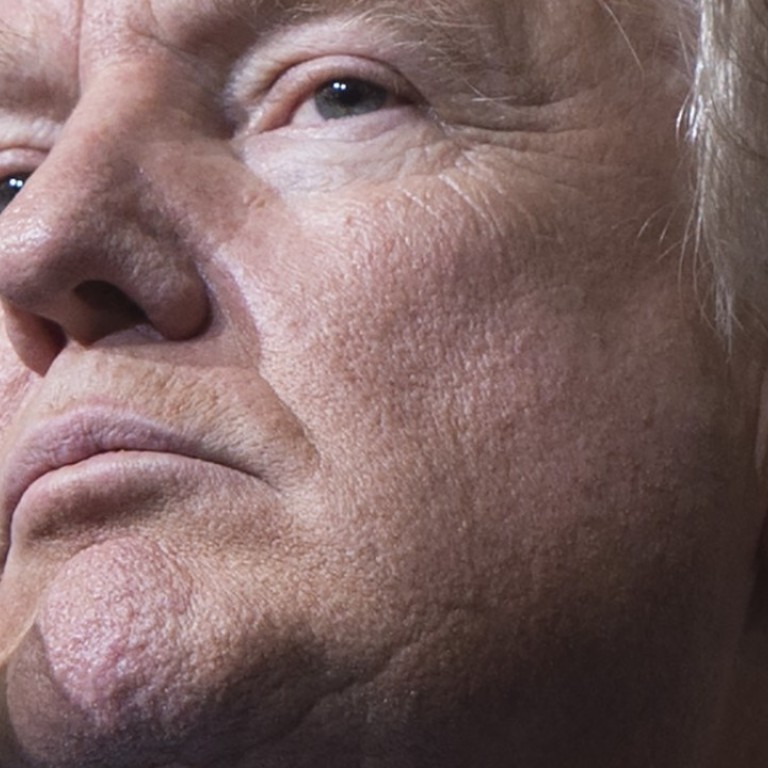
Fear begins to creep back into financial markets, with Trump taking centre stage
There’s clear evidence that international investors are starting to fret about a sharp fall in asset prices, spooked by risk aversion and volatility
It may not feel like it, but fear is beginning to creep back into financial markets.
While the benchmark S&P 500 equity index stands only slightly below its record high set earlier this month and the closely watched Vix index - Wall Street’s so-called “fear gauge” which measures the anticipated level of volatility in the S&P 500 - is just a few points above its historical low, there are signs that international investors are starting to fret about a sharp fall in asset prices.
While there have been plenty of false alarms over the past several years when it comes to the threat of a disorderly sell-off in markets, mainly because of the persistence of “buy the dip” trading strategies which I discussed in an earlier column, investors are turning more bearish.
Less publicised gauges of sentiment are reflecting growing concerns about worryingly low levels of complacency in markets in the face of a plethora of political and financial risks in the coming weeks and months – particularly the threat of a tense standoff over the United States’ debt ceiling which needs to be raised by mid-October.
The growing nervousness in markets is most evident in the recent surge in demand for derivative contracts that help shield investors’ portfolios against a sharp decline in the S&P 500 index.
The so-called SKEW index of the Chicago Board Options Exchange (CBOE), a measure of investor anxiety about “tail risk” (or major events which severely undermine sentiment) in the S&P 500, has risen above its long-term average of 117 and, earlier this month, hit its its third-highest reading on record.
There is an inescapable feeling that the mood music has changed – and is not half as cheerful as it was at the start of the summer
Another lesser-known index, a proprietary one developed by Citigroup known as the Global Risk Aversion Macro Index which assesses risks across different asset classes, has risen from a three-year low touched in July and, last Friday, produced a bearish signal for the first time since mid-2016.
Even the lifeless Vix index, which according to Bloomberg is on track to record the smallest daily swings for the whole of 2017 since 2009, just experienced its most volatile month since last September.
There are other signs that risk aversion and volatility are becoming more pronounced.
Capital flows to emerging markets have become more erratic over the past few months, mainly because of outflows from highly speculative Exchange Traded Funds (ETFs), while US stock funds have suffered ten consecutive weeks of redemptions.
Perhaps most tellingly, European equity funds, one of the most popular asset classes which have enjoyed more than $30bn of inflows this year, suffered their first spell of outflows last week in nearly two months.

To be sure, the sudden nervousness in markets could soon dissipate in the same way that previous bouts of anxiety gave way to long periods of calm.
Yet there is an inescapable feeling that the mood music has changed – and is not half as cheerful as it was at the start of the summer.
The two storm clouds hovering over markets right now are Donald’s Trump’s crisis-ridden presidency and mounting uncertainty about the consequences of the removal of monetary stimulus.
Despite promises from Trump’s advisers of a major push on tax reform this week, the severity of the political discord in Washington and the growing divisiveness of Trump’s presidency are forcing investors to seriously question the stretched valuations of US stocks and the historically low spreads, or risk premia, in corporate debt markets.
The political crisis in Washington, moreover, is escalating just when the Federal Reserve and the European Central Bank are discussing steps towards exiting their ultra-loose monetary policies
While Trump’s election victory turbocharged a rally in markets, it is now one of the biggest threats to investor sentiment.
The political crisis in Washington, moreover, is escalating just when the Federal Reserve and the European Central Bank are discussing steps towards exiting their ultra-loose monetary policies.
The threat of a “policy error” from both central banks is now viewed as the biggest tail risk in markets, according to the August fund manager survey published by Bank of America Merrill Lynch.
It is not surprising, therefore, that the rally in European and US equities has gone into reverse, with eurozone stocks down 3.5% in August.
Make no mistake, volatility is flickering back to life in markets. Investors could face a much bumpier ride in the autumn and should position their portfolios accordingly.
The good news is that a bit of volatility is a much-needed antidote to the excessive complacency in markets this year. Too much volatility, on the other hand, could trigger a sharp and sustained sell-off. For investors, caution is the watchword.
Nicholas Spiro is a partner at Lauressa Advisory

